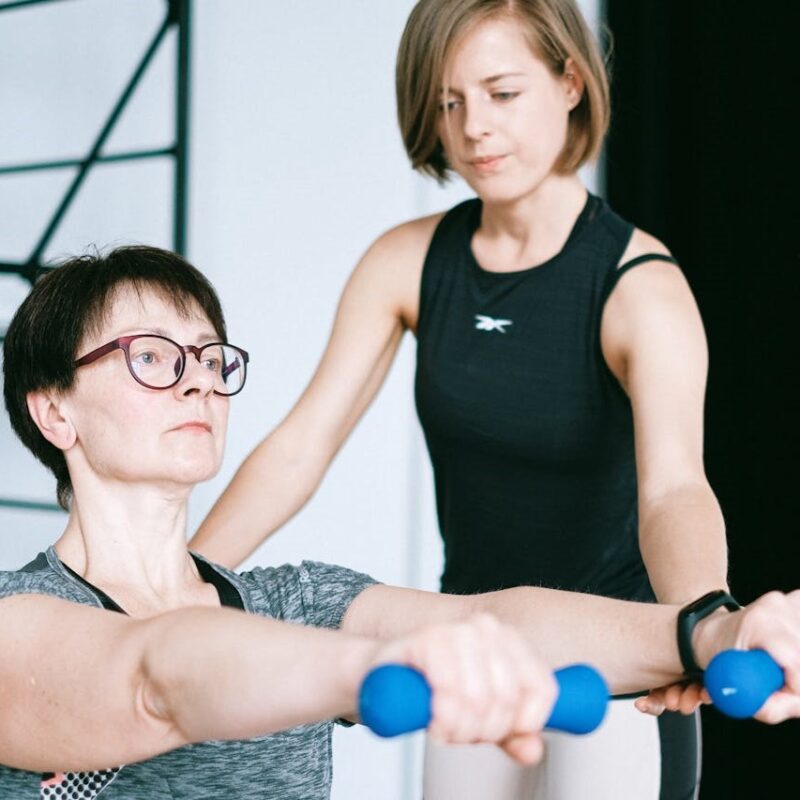
Blog
Busting The Worst Workout Myths

We’ve always been impressed by fitness enthusiasts flexing their abs and biceps. In an effort to be like them, we are ready to believe in all kinds of workout myths without giving them a thought.
What most people fail to realize is that workout routines and their effects will differ for almost everyone, and blindly following someone’s schedule won’t necessarily give you the same results.
Have you also been believing in workout myths? Thinking that you’ll be able to achieve that muscular body in less than a month?
Don’t worry!
All of us have believed in such things at some point.
Still, it’s never too late to correct yourself and go the right way.
To help you out, we have listed some of the common workout myths and facts.
Myth#1: Do lots of cardio to lose weight

Doing too much cardio has always been the worst.
While cardio is good on its own, too much cardio will eventually destroy your gains. It’s better to keep your cardio to a limit.
In general, you should include cardio in your workout routine to lose weight. Cardio is also helpful for weight loss because it burns extra calories.
But relying solely on cardio is another weight loss myth. You should consider the other options as well and perform a combination of exercises to reach your weight loss goals.
Your exercise routine should generally include at least 20-30 minutes of cardio.
Myth#2: Sweating and soreness mean your workout was good
It’s natural to sweat and get your muscles sore after exercise.
But, it isn’t the only indicator of a good exercise.
Sweating happens because your body’s core temperature increases during exercise. Too much heat can be dangerous, so your body has defense mechanisms to cool it down via sweating. As the water evaporates in sweat, your body cools down.
Also, muscle soreness means that you put stress on your muscles. In fact, you can exercise one day, and your muscles won’t be sore the next.
Muscle soreness is also common in people who are hitting the gym for the first time because their muscles aren’t used to too much stress.
Just because you don’t sweat enough or your muscles don’t get sore doesn’t mean the workout wasn’t worth it.
Myth#3: As long as you exercise, you can eat whatever you want

If you want to lose weight, this approach isn’t for you.
It’s true that exercise can help you burn extra calories, and you feel hungry after an extensive workout session.
Still, if you are on a weight loss journey, you need to control your diet. Otherwise, you’ll start to gain the extra calories you just burned during the workout.
So, we should understand that nutrition and fitness go hand in hand. We cannot achieve one by compromising on the other.
With regular exercise, make sure you have a healthy diet as well.
Myth#4: More exercise guarantees better results
This is one of the most common workout myths.
Just because you exercise more doesn’t mean you will get the best results.
Exercising is important, but exercising more than your body can tolerate can be dangerous. Your muscles can get sore, and fatigue will prevent you from working out again the next day.
This way, it will be more difficult for you to maintain a regular gym routine.
So, instead of being too harsh on yourself, you should take things slowly.
Myth#5: Stretch before a workout

Stretching has its own benefits.
But when should you stretch?
This question has been a topic of controversy among fitness enthusiasts.
People who think that stretching before exercise is good have the justification that stretching is a kind of warm-up exercise. Stretching before a workout prepares your muscles for the pulls and stress. Also, pre-workout stretches should help with mobility and elasticity.
Similarly, people who prefer stretching after their workout say stretching improves flexibility and increases range of motion.
So, it’s good to do stretching before and after a workout. Depending on your fitness goals, you can choose one of the options.
Myth#6: Squats are bad for knees
A common workout myth is that squats are bad for the knees.
However, some studies suggest that squats are actually good for the knees.
If you already have a health issue and your doctor suggests not to put pressure on the knees, you can consult the doctor about quitting squats.
However, in general, it is believed that squats are beneficial for the knees.
For people who want to strengthen their leg muscles, squats are a great option. Performing squats also helps with increasing mobility and makes your daily life activities like sitting and standing much easier.
On the other hand, people with bad knees and knee problems should consult a professional regarding squats.
Myth#7: The best time to exercise is in the morning

Does it feel difficult to get up early in the morning and go to the gym?
Many people give up exercise because they find it difficult to get up early in the morning.
It is because we have always heard that you should exercise early in the morning.
But the truth is, there is no fixed time to exercise.
It’s true that most people are productive in the morning, and exercising at this time helps you stay active throughout the day.
On the other hand, some people feel they should exercise at the end of the day.
Whatever time you choose will depend on your feasibility and schedule. There is no fixed time to exercise.
Take-away message
Have you heard about these workout myths?
Well, we’ve busted them.
As a beginner, it’s quite common to get trapped in myths and start following whatever someone says.
But you can always come back on track.
If you want to build muscles by taking supplements, a better option is to opt for a high-quality protein powder to gain more energy and strength.












